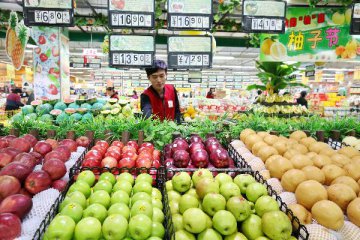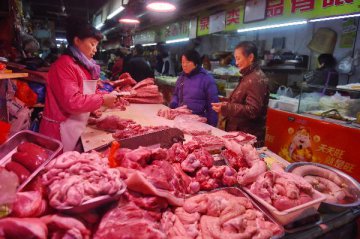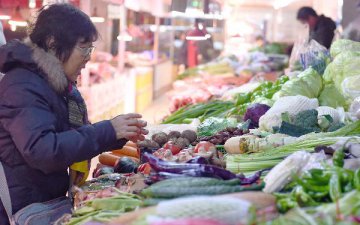
Pork prices launched another round of downtrend. Latest data released by the Ministry of Commerce shows that pork prices fell 1.2 percent in the week from March 13 to 19, and fell 1.5 percent in the first two months this year. Data from www.soozhu.com shows that since January 30 this year, the average price of bacon hogs for slaughter has continued to fall from 18 yuan/kg. The price plunged to below 15.49 yuan/kg on March 12, and then to 15.47 yuan/kg on March 16, almost in line with the lowest price of 15.43 yuan/kg on Oct. 16, 2016. The price recorded a cumulative decline of 2.5 yuan/kg or 13.9 percent.
Chief analyst with www.soozhu.com Feng Yonghui said that since China’s Lantern Festival, pork prices have been moving in the opposite direction with the same period last year. In the coming one and half months till the end of April, as the demands can hardly pick up, pork prices will fluctuate narrowly at the current level of 15.5 yuan/kg. It is hard to rise above 16 yuan/kg. And there is still possibility for it to fall below 15yuan/kg.
Weak pork prices are consistent with the movement of the consumer price index (CPI). Data from the National Bureau of Statistics (NBS) shows that the CPI rose 0.8 percent year on year in February, the lowest increase in nearly two years. The year-on-year increase of food prices were also the lowest since 2000.
According to a recent report released by the Ministry of Agriculture, pork prices will stop falling and stabilize around May. The report said that pork consumption has declined after the Spring Festival due to seasonal factors. As the inventory continues to decline, the supply of hog will remain tight, and imports continue to remain high. The tight supply will in some degree support the pork prices. The large imports and seasonal decline of pork will continue for some time. Pork prices are expected to fall slightly in the short run. But as hog productivity fails to recover, pork prices will fluctuate at a high level.
Although pork prices may swing sharply for some time in the further, it will not change the downtrend of the CPI in the next few months, as most industry experts believed.
Lian Ping, chief economist with Bank of Communications, said that the notable pullback of CPI in February was mainly due to carryover effect. As the factor weakens in the future, the CPI will pick up. As the carryover effect still remains low in March and April, the CPI growth is expected to remain at a relatively low level for the next two months. As the carryover effect rises in May and June, the CPI is likely to rise if food prices rebound.
Ren Zeping, chief economist with Founder Securities, expected that the CPI will grow around 2.3 percent this year. Ren said that the CPI reached a high in January. Although the CPI fell sharply to reach one-year low of 0.8 percent in February due to a rapid decline in carryover effect, it will continue to rise until August, and fluctuate at a high level. The operating range is between 0.8 to 2.9 percent. He believed that the contraction of supply, demand recovery and output gap will push inflation up.
Guo Lei, chief macro analyst with GF Securities, believed that 2017 is a mild inflation period. In 2017 there may be some macro events that affect the movement of the price, but it is now hard to tell the direction and the degree of the affect. For example, one of the directions in the supply side reform of agriculture is "pricing by market and the separation of price and subsidies". Another direction is to “cut inventory, reduce planting area and adjust planting structure. The price logic of the two directions is not consistent. It needs to observe how these two directions will impact the price of related products in the short and medium term.
Zhou Jingtong, an analyst at the Bank of China's International Finance Institute, said that as seasonal factors fade, the CPI growth will gradually back to where structural factors dominate. That means the CPI growth will rebound slightly in the next few months, but the rebound is limited. It should pay special attention to the price rise in education, health care and housing. Macroeconomic policy, especially monetary policy, should pay close attention to price rise so as to prevent severe inflation or deflation. On the other hand, it should be strategic. It should analyze and predict the trend, background and logic behind the rise and fall of prices. It should give too much concern over the price movement in one specific month.
Translated by Coral
























Latest comments